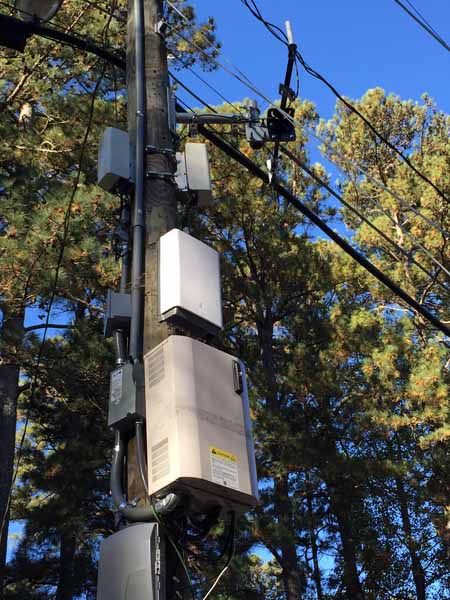Capacity and coverage are king in the telco world: If there are any cracks in a provider’s service, VIP customers – not to mention revenue – could easily fall through and get snatched up by a competitor.
As a result, many mobile network operators (MNOs) are scrambling to boost their network capacity in high-traffic, urban markets as the onset of 5G and an overall proliferation of connected devices are set to overwhelm existing network architectures. This will require an aggressive uptick in the number of outdoor small cells that MNOs will seek to install in the coming years, with experts anticipating a 40% increase through 2021.
There are, however, a number of challenges associated with rolling out a new network of small cells to boost capacity. Network planning considerations like backhaul, power, permitting and siting, for instance, are just a few of the assurances that need to be in place before these installations can be started. This makes small cell rollout a potentially complex and costly undertaking – one some MNOs are hoping to alleviate by pursuing small cells-as-a-service (SCaaS).
In a pinch – or on a budget – SCaaS delivers
For instance, in 2016, Verizon undertook a major small cell deployment in San Francisco ahead of Super Bowl 50 to ensure their network could handle the capacity demands associated with such a confluence of users. In order to deploy roughly 500 small cells throughout the region in a time crunch, Verizon successfully partnered with an infrastructure provider to build and run about 300 to 400 nodes on behalf of the wireless company, while Verizon maintained the remaining 100 nodes internally. The company then partnered with street furniture company JCDecaux to help strategically deploy nodes discreetly on furniture in high traffic urban areas across the country.
By working with an as-a-service third party, Verizon was able to act quickly and effectively without having to invest extensive money or manpower. But while giant service providers like Verizon have leveraged third-party assistance in their small cell deployment, a SCaaS solution is most likely to benefit smaller operators without the budgets or staff to expand their network capacity at the same pace of the industry giants. In fact, in many cases, it makes little sense for large providers to undertake a SCaaS strategy.
Where SCaaS has its limits
For example, a major downside of the SCaaS model is that these solutions are often designed to support multiple operators at each location, restricting each MNO to the same capabilities of that specific node. As a result, the potential coverage and capacity differences that operators often tout to give themselves a leg up over the competition are lost, preventing them from distinguishing their service offerings in many cases as a result.
Another challenge MNOs constantly face with any kind of small cell deployment – be it SCaaS or traditional – is that these processes require proper planning from the get-go to deliver the boosted network capabilities that their customers seek.
Fighting SCaaS limitations with planning, strategy
Unfortunately, many MNOs have the preconceived notion that small cells can be placed almost anywhere to deliver a capacity and coverage improvement. In reality, because small cells can only deliver coverage areas between 100 and 200 meters outdoors – and far less inside – it is critical to bring strategy into the equation, targeting hotpots with a high level of precision to reap the return on investment regardless of the installation model.
Another important part of making small cell deployments successful will be the operator’s ability to not only plan the network, but also to test the network on an ongoing basis. The planning process itself should be preceded by testing quality of service (QoS) as well as quality of experience (QoE) to determine the ideal location for small cell deployment. This should happen whether indoors and/or outdoors, and it is also necessary that the same testing be performed during and after installation to ensure the targeted QoS and QoE metrics are achieved and maintained.
No matter which path to deployment an MNO decides on, and whether prepping the network for the next Super Bowl, or boosting capacity in a major metropolitan area, for all operators, proper network planning and testing are key. It helps keep pesky cracks in capacity and coverage from forming, and MNO customers on solid ground.

